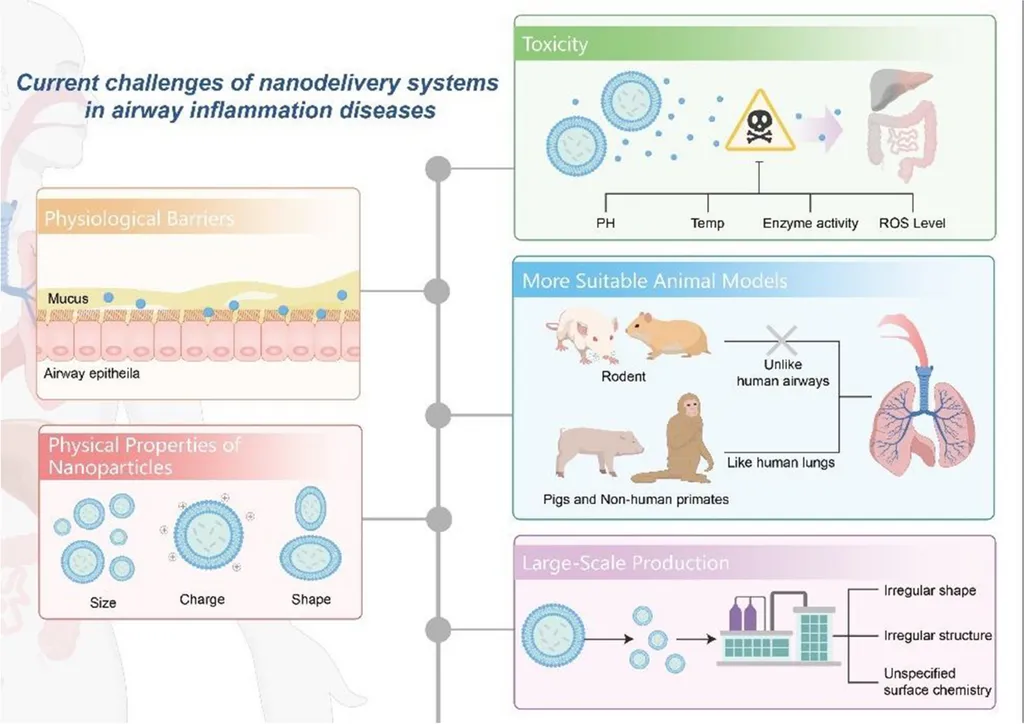In the relentless pursuit of effective treatments for inflammatory lung diseases, a beacon of hope emerges from the labs of Yuantong Qi and colleagues at the Yu-Yue Pathology Scientific Research Center and Third Military Medical University in Chongqing, China. Their recent review, published in *Bioactive Materials* (which translates to *Bioactive Materials* in English), casts a spotlight on advanced nanotherapies, offering a promising avenue for precision treatment of acute pulmonary inflammation.
Inflammatory lung diseases, with their staggering global morbidity and mortality rates, have long posed a significant clinical challenge. Traditional pharmacological interventions, while frequently used, often fall short in terms of efficacy and safety. “Novel therapeutic strategies are urgently needed to improve clinical outcomes,” Qi emphasizes, pointing to the critical need for innovation in this field.
The review outlines the complex pathogenic mechanisms and pathological microenvironment linked with acute lung inflammation, characterized by excessive inflammatory mediator production and robust immune cell infiltration. It then delves into the world of bioresponsive nanocarriers, discussing various types and their potential for modulating acute pulmonary inflammation.
One of the most exciting aspects of this research is the exploration of innovative biomimetic nanotherapies. These include strategies based on cell hitchhiking, cell membrane coating, and extracellular vesicles. “These next-generation nanotherapies hold immense potential for targeted treatment,” Qi notes, highlighting the precision and efficiency of these advanced therapies.
The review also addresses the key challenges impeding the clinical translation of these nanotherapies. Despite these hurdles, the potential impacts on the energy sector are substantial. Efficient and targeted treatments for inflammatory lung diseases could lead to reduced healthcare costs, increased productivity, and improved quality of life for patients. This, in turn, could drive economic growth and innovation in related industries.
As we look to the future, this research paves the way for further exploration and development in the field of nanotherapies. It underscores the importance of continued investment in research and development, as well as the need for collaboration between academia, industry, and healthcare providers.
In the words of Qi, “The journey towards effective and safe treatments for inflammatory lung diseases is ongoing, but with advanced nanotherapies, we are one step closer to making a significant impact.” This research not only advances our understanding of inflammatory lung diseases but also offers a glimpse into the future of precision medicine.

